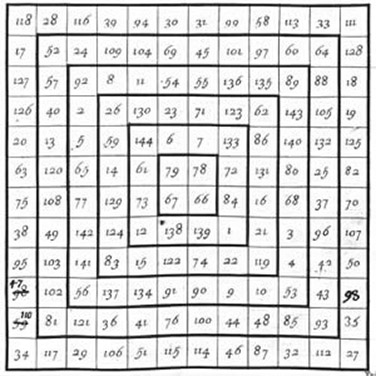Magic Squares

A magic square is an arrangement of the first n^2 whole numbers (without zero) in a square with n rows and n columns so that the numbers in each row, column and diagonal add up to the same total. Here, n is called the order of the magic square.
History
The Chinese were already using magic squares in connection with mystical speculations long before our calendar began. In Arabic culture, various mathematical methods to create magic squares were already known and a theory worked on intensively by the twelfth century. And by the fourteenth century, magic squares with the order three to nine also began to appear in Western Europe. They were linked to planets, recorded on amulets and used for astrological purposes. Italian and German arithmeticians seized upon the subject. In the sixteenth century, people in the West also began to take an interest in mathematical methods for the construction of magic squares, detached from their use in magic and astrology. However, the golden age for the production of magic squares only began in the seventeenth century with the work of Claude Gaspard Bachet de Méziriac and many others.
Mathematics
Determining the number of magic squares of a particular order is an unsolved mathematical problem, whereby mirrored or rotated squares are considered identical. The cases of order one, two and three are evident. Since 1693, thanks to Bernard Frénicle de Bessy, we have known that there are 880 magic squares of order four and only in 1973 was the nine-digit figure for the number of magic squares of order five determined. For higher orders, there are only approximations, which people endeavour to work out using stochastic methods.